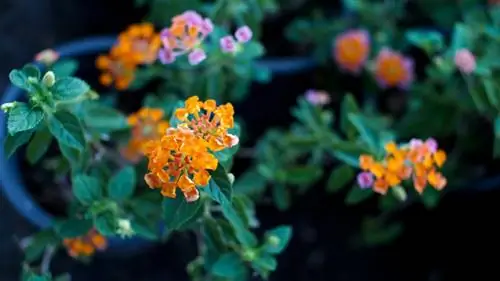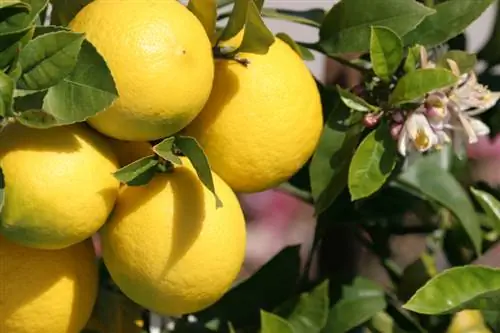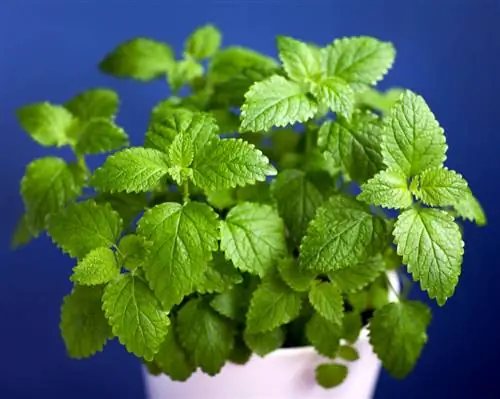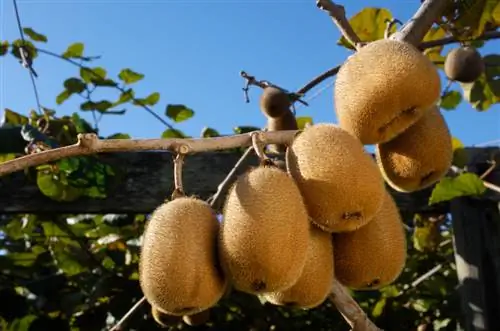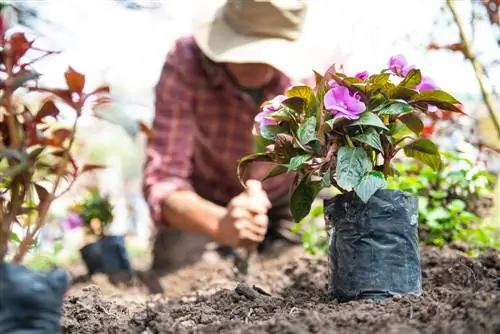- Author admin [email protected].
- Public 2023-12-16 16:46.
- Last modified 2025-01-23 11:20.
Lantana lantana is one of the most popular balcony bloomers. Not only do they enchant the balcony with their small flower umbels from June to October, but they are also relatively robust and easy to care for. Only regular repotting is necessary so that the small shrub thrives.
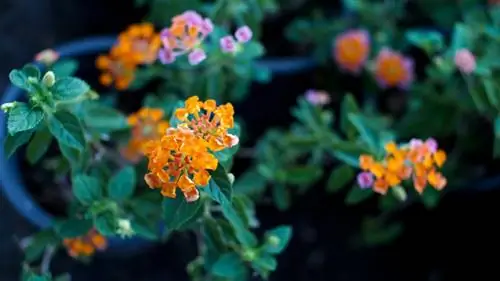
When and how should you repot a lantana?
Ranlantana should be repotted when the roots grow out of the drainage hole in the flower pot. Choose a pot that is one to two sizes larger and use conventional balcony or flowering plant soil enriched with sand or cactus soil.
When will we repot?
There is no fixed interval like with other plants when it comes to lantana. Repot whenever the roots begin to grow out of the pot's drainage hole.
The pot size
Wandry roses bloom best in a pot that seems almost a little too small. If the planter is too large, the lantana will initially form additional roots and leaves and there will be no abundance of flowers. Therefore, choose a pot that is one or two sizes larger than the previous one.
The substrate
Lantana thrives well in conventional balcony or flowering plant soil, to which you can add some sand or cactus soil to loosen it up. Alternatively, topsoil enriched with sand and compost is suitable.
Planting
First, some substrate is filled into the new pot. Proceed as follows:
- Drill a water drainage hole in the vessel so that there is not already a drain.
- Cover this with an old pottery shard.
- Pour in a layer of expanded clay (€19.00 on Amazon) as a drainage layer. This prevents waterlogging, to which the lantana is extremely sensitive.
- Put some substrate on top and press it down.
- Carefully remove the plant from the old pot and place it in the middle.
- Fill all around with soil and press down.
- Water thoroughly.
- Tip liquid that collects in the coaster after 15 minutes.
Tip
In the first few weeks after transplanting, the lantana does not need any additional fertilizer because the potting soil is already enriched with nutrients. Do not start fertilizing until two to three months after transplanting, depending on the growing season.

